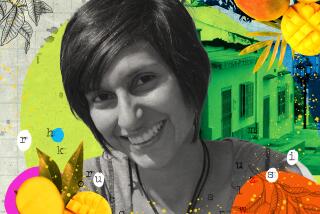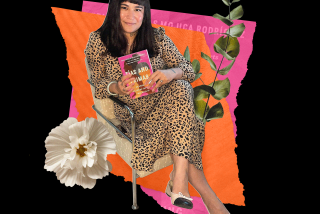<i> Talking Back to Machismo</i> : LANDSCAPES OF A NEW LAND: Fiction by Latin American Women <i> by Marjorie Agosin (White Pine Press: $19, cloth; $10, paper; 194 pp.; 0934834-96-2) </i>
“Every day my husband contradicts the version in the mirror. I look at myself in it and he insists that I perceive myself wrongly. I am not, in truth, the shadows, the wrinkles with which I see myself. Like my father, he too is responsible for my eternal youth. . . . . . . at the end of the day I no longer know how old I am.” (from “I Love My Husband.”)
Included among the 21 works in “Landscapes of a New Land: Fiction by Latin American Women,” this short first-person narrative by Nelida Pinon, is an ironic statement on the condition of women in a male-dominant society. The narrator is not simply describing a conjugal situation unique to a stereotypical “Macho” Latin American society. Instead, “I Love My Husband” is a commentary on the dependent relationship that women have withstood, not only in marriage but in all social constructs in traditional Western society. A woman perceives herself through the male mirrors that surround her throughout her life.
At the same time, this story exemplifies the alternative perspective that this collection of short narratives offers, not only about the role of women writers in Latin America, but of Latin American reality itself. Emerging at a time in which the prevailing representation of that reality has been almost entirely in the hands of male writers such as Jorge Luis Borges, Gabriel Garcia Marquez, Mario Vargas Llosa, and Manuel Puig, the main objective of this collection, edited by Marjorie Agosin, herself a fiction writer, is to allow the women to speak for themselves.
Writing as an act, is an affirmation of a historical presence and is simultaneously, a “representation” of cultural and intellectual traditions. If historical revisionism has been the apex of the Latin American literary “Boom,” it should be evident that the power inherent in the act of writing is a contemporary concern among women writers such as Luisa Valenzuela, Elena Poniatowska, Margo Glantz, Nelida Pinon and Cristina Peri Rossi. After all, the traditional domination of the male voice in narrative discourse has necessarily precluded that female presence is first, determined by the male, and second, “represented” by him. Woman’s accessibility to writing whether through glyph or visual image constitutes an alternative view of a cultural reality.
According to Agosin, the international recognition accorded Chilean writer Maria Luisa Bombal in the 1970s was responsible for the emergence of a new generation of writers headed by Luisa Valenzuela. They include along with those mentioned above, lesser-known writers such as Yolanda Bedregal, Lygia Fagundes Telles, Helena Araujo, Alicia Steinberg, Carmen Naranjo, Laura Riesco, and Elvira Orphee, along with the more-familiar Marta Brunet and Clarice Lispector. Diverse and divergent, their voices range from internal monologues to neo-realistic narratives and experimental fragments. These works are, according to Agosin, “the images and voices that reflect the eclectic nature and energy of these women” and the world they construct reflects the pathos and insecurities comcomitant with the search for self affirmation.
Yet, while this collection is a valuable contribution to the comprehension of the totality of contemporary Latin American literature, there are some puzzling omissions as well as some questions. Where are the works or references to Lydia Cabrera, Silvina Bullrich, Teresa de la Parra or Elena Garro, all of whom have been overshadowed by their male contemporaries despite their distinguished literary contributions? Why is Ocampo, who along with her sister Victoria, her husband Adolfo Bioy Casares and their friend Jorge Luis Borges founded the group and literary magazine Sur, as well as the publishing house Editorial Sudamericana simply dismissed as a “precursor to the fantastical literature of her country.”
Yet despite these critical questions as well as uneven translations, “Landscapes of a New Land” awakens an awareness not only of the rich contribution that women writers have made to Latin American literary topography, but to the partial vision of that landscape that the dominant male narrators have presented to the North American reader up to now. It marks an important point of departure for further exploration.
More to Read
Sign up for our Book Club newsletter
Get the latest news, events and more from the Los Angeles Times Book Club, and help us get L.A. reading and talking.
You may occasionally receive promotional content from the Los Angeles Times.







